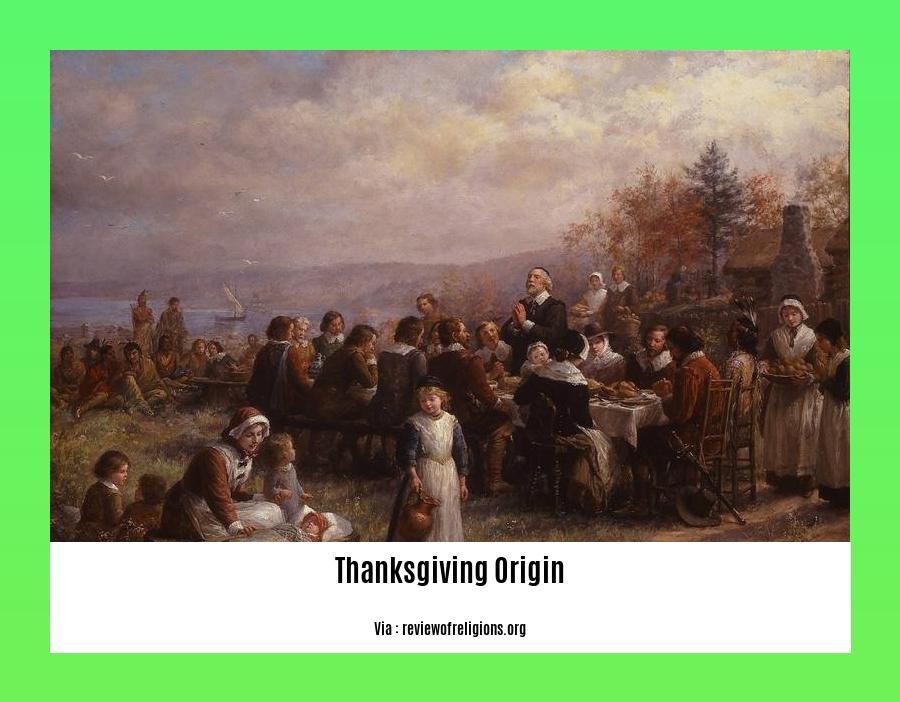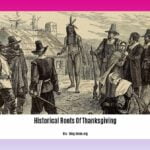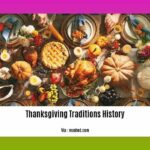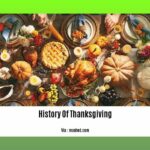Thanksgiving Origins: Uncovering the True Roots of the Beloved Holiday, a holiday steeped in tradition and celebrated across the United States, has a captivating history. Join us as we embark on a journey to uncover the true origins of this cherished event, exploring the rich tapestry of historical accounts and unveiling the fascinating narrative behind its inception.
Key Takeaways:
- Thanksgiving is a national holiday in the U.S.
- The first Thanksgiving took place in 1621 in Massachusetts.
- Pilgrims celebrated a successful harvest with Wampanoag Indians.
- Thanksgiving became an annual event in New England.
- President Lincoln established it as a national holiday in 1863.
Thanksgiving Origin: A Journey to the Roots of a Cherished Tradition
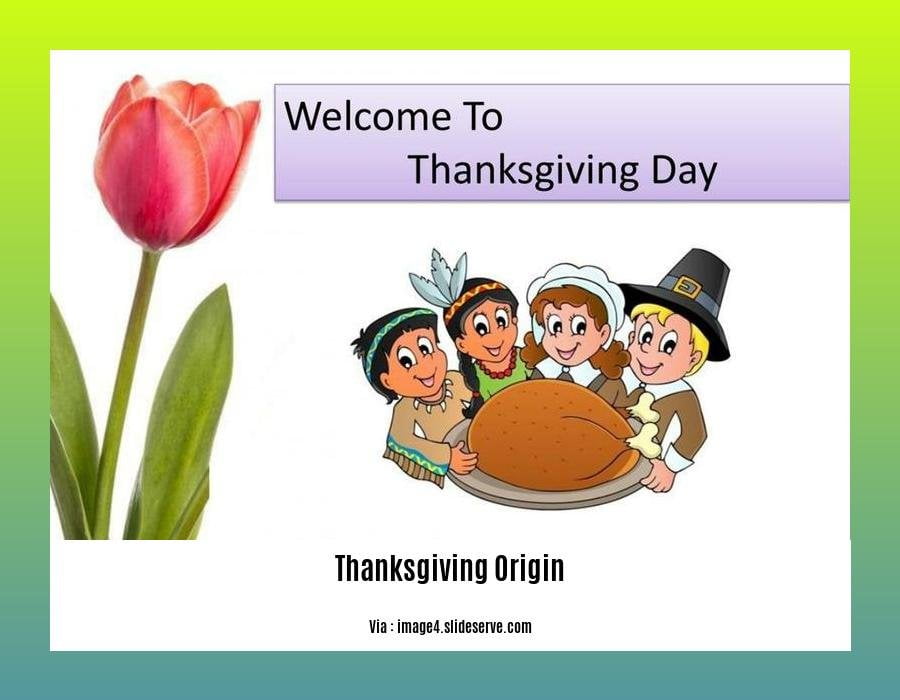
Thanksgiving, a beloved holiday steeped in gratitude and familial warmth, has a fascinating origin story that stretches back to the shores of the New World.
The Pilgrims’ Arrival and Struggles
In 1620, a band of English settlers known as the Pilgrims embarked on the perilous journey to North America aboard the Mayflower. After months at sea, they reached the shores of Plymouth Plantation in present-day Massachusetts, where they faced a harsh winter and dwindling supplies.
Native American Assistance
The Pilgrims’ survival depended heavily on the assistance of the Wampanoag Indians, who shared their knowledge of the land and taught them how to grow crops. This alliance proved invaluable, as the Pilgrims struggled through the first year in their new home.
The First Thanksgiving
The following fall, in 1621, the Pilgrims enjoyed a bountiful harvest, thanks in part to the guidance of their Native American allies. To express their gratitude, they organized a three-day feast, inviting the Wampanoag Indians to join them. This gathering, known as the First Thanksgiving, symbolized a bond between two cultures and celebrated the Pilgrims’ newfound prosperity.
Evolution of Thanksgiving
Over the centuries, Thanksgiving evolved into an annual tradition in New England. In 1863, during the height of the Civil War, President Abraham Lincoln declared it a national holiday, symbolizing unity and hope amidst a trying time.
Modern Thanksgiving
Today, Thanksgiving is a cherished holiday celebrated throughout the United States and Canada. It is a time for family gatherings, delicious feasts, and reflection on the blessings of life. The spirit of gratitude that originated in that first gathering between the Pilgrims and the Wampanoag Indians continues to resonate through the ages.
Ever wondered how Thanksgiving started? Discover the story of the Pilgrims and the Native Americans during the history of Thanksgiving. It’s a tale of survival, gratitude, and the founding of a new nation.
If you’re looking for the roots of your favorite Thanksgiving traditions, thanksgiving traditions history gives a rich background on customs like the turkey dinner, parades, and football games.
But where did the holiday of Thanksgiving actually come from? historical roots of thanksgiving provides a timeline from ancient harvest festivals to President Lincoln’s proclamation in 1863, exploring the influences that shaped this beloved holiday.
The First Thanksgiving Feast
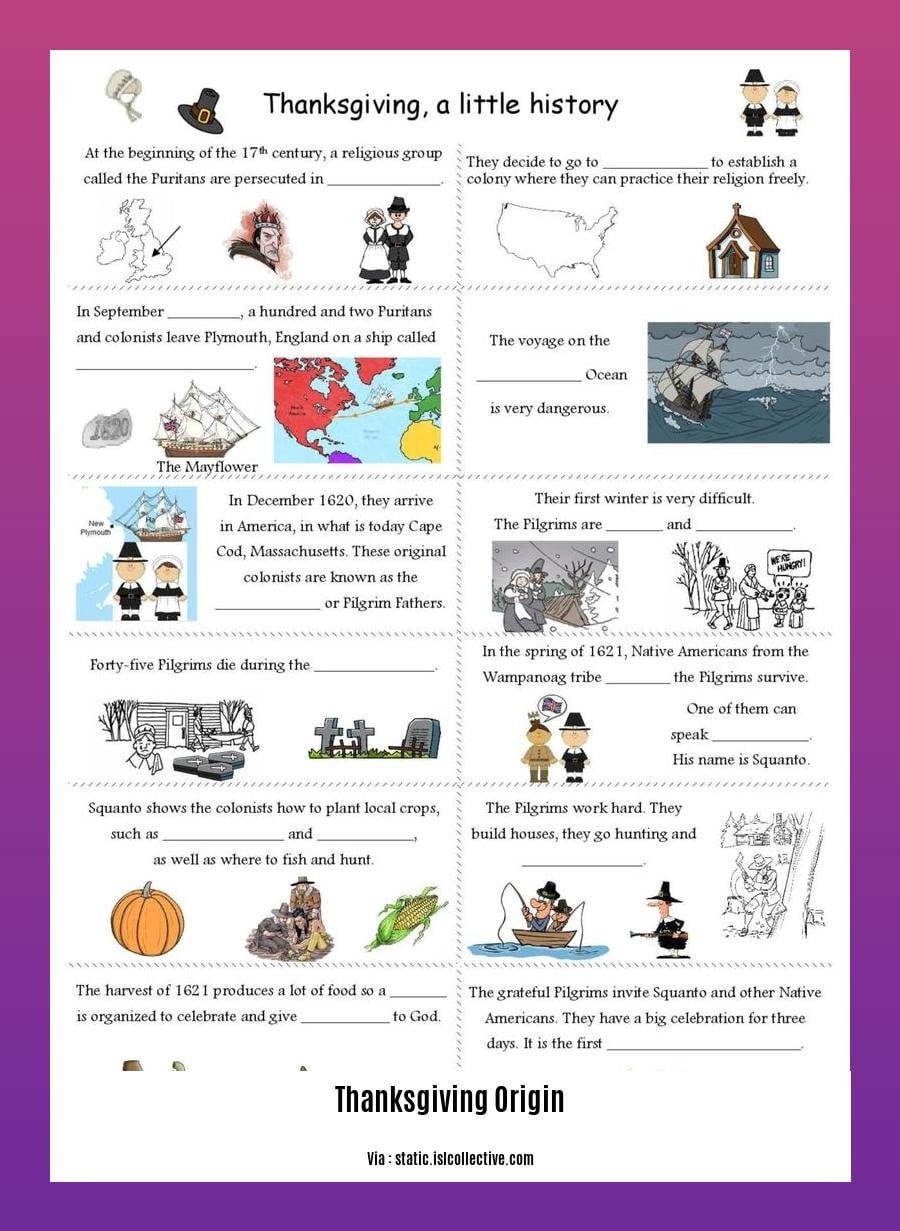
Thanksgiving is a beloved holiday that brings families and communities together to celebrate and be grateful for the blessings of the past year. But how did this tradition begin? Let’s journey back to the origins of the first Thanksgiving feast.
Key Takeaways:
- The Pilgrims’ journey to America was plagued with hardship.
- The Native Americans played a pivotal role in the Pilgrims’ survival.
- The First Thanksgiving Feast was a three-day celebration of gratitude.
- The modern Thanksgiving menu has evolved over the centuries.
- Today, Thanksgiving is a national holiday celebrated with feasts, family gatherings, and reflection on life’s blessings.
The Pilgrims’ Perilous Journey
In 1620, a group of English settlers known as the Pilgrims set sail in search of religious freedom. Their journey aboard the Mayflower was arduous, marked by stormy seas and dwindling supplies. Upon arriving in Plymouth, Massachusetts, the Pilgrims faced a harsh winter and unfamiliar surroundings, resulting in severe illness and death.
Native American Aid
As the Pilgrims struggled to survive, they encountered the Wampanoag Indians, who generously shared their knowledge of the land and its resources. The Wampanoags taught the Pilgrims how to cultivate crops, hunt game, and fish in the unfamiliar wilderness. This invaluable assistance proved essential to the Pilgrims’ survival.
A Feast of Gratitude
In 1621, after a bountiful harvest, the Pilgrims and Wampanoags gathered for a three-day feast to celebrate their newfound prosperity and express their gratitude to one another. This gathering became known as the First Thanksgiving Feast.
The menu featured a variety of foods, including venison, corn, shellfish, cornmeal dishes, beans, nuts, dried berries, pumpkin, and turkey. The feast was a symbol of unity, friendship, and the Pilgrims’ appreciation for the support they had received from the Native Americans.
Evolution of Thanksgiving
Over the years, Thanksgiving has evolved from a religious celebration to a national holiday in both the United States and Canada. The modern Thanksgiving menu has undergone changes, with stuffing becoming a common dish inspired by colonial cookbook recipes.
Today, Thanksgiving is a time for family gatherings, feasts, and reflection on life’s blessings. It is a reminder of the importance of gratitude and the spirit of unity that prevailed during the first Thanksgiving feast.
Citation:
- National Geographic: How the traditional Thanksgiving feast has evolved over centuries
Thanksgiving as a National Holiday
Thanksgiving, a day of feasting, family, and gratitude, holds a special place in the hearts of Americans and Canadians. Its origins, however, are steeped in a rich and complex history that goes far beyond the familiar story of the Pilgrims and the first Thanksgiving feast.
Key Takeaways:
- The first Thanksgiving, held in 1621, was a three-day harvest celebration between the Pilgrims and the Wampanoag Indians.
- Thanksgiving became a national holiday in the United States in 1863, during the American Civil War.
- In 1941, Congress established the fourth Thursday of November as the official Thanksgiving as a National Holiday.
- Today, Thanksgiving is a time for families and friends to gather, share a bountiful meal, and express gratitude for their blessings.
The Evolution of Thanksgiving
Thanksgiving’s journey from a harvest festival to a national holiday is a testament to its enduring significance. Initially, it was a religious celebration observed in New England colonies. As the United States expanded, Thanksgiving became a day of national unity and gratitude, particularly during times of crisis.
In 1863, President Abraham Lincoln proclaimed the first national Thanksgiving Day amidst the turmoil of the Civil War. It was a gesture of hope and reconciliation, a plea for the nation to come together in gratitude and reflection.
Thanksgiving Today
Today, Thanksgiving remains a beloved holiday, celebrated with cherished traditions. Families gather around the table, sharing a feast that often includes turkey, stuffing, mashed potatoes, cranberry sauce, and pumpkin pie. Parades and football games add to the festive atmosphere.
Beyond the feasting and festivities, Thanksgiving is a time for gratitude. It’s a day to pause and reflect on the simple and profound blessings in our lives, to appreciate the abundance around us, and to extend a helping hand to those in need.
Sources
Modern Thanksgiving Traditions
Over the centuries, Thanksgiving has evolved from a simple harvest feast into a national holiday steeped in tradition. Modern Thanksgiving Traditions reflect our deep-rooted values of gratitude, family, and feasting.
The Central Feast:
At the heart of Thanksgiving is the bountiful feast shared with loved ones. Turkey, a symbolic dish since the 19th century, takes center stage alongside traditional accompaniments like stuffing, mashed potatoes, cranberry sauce, and pumpkin pie. These culinary staples evoke memories, strengthen bonds, and symbolize the abundance for which we’re grateful.
Family Gatherings:
Thanksgiving is a time for hearts to come together. Families travel near and far to reconnect, share stories, and create lasting memories. The warmth of laughter, the echo of old tales, and the joy of shared experiences make Thanksgiving a cherished occasion.
Parades and Football:
In many cities, Thanksgiving morning kicks off with vibrant parades featuring whimsical floats, marching bands, and the iconic Macy’s Thanksgiving Day Parade in New York City. The afternoon often brings the excitement of football games, where families gather around the TV or cheer on their favorite teams in stadiums.
Acts of Kindness:
Beyond the feasting and festivities, Thanksgiving inspires acts of kindness and giving back. Volunteering at soup kitchens, donating to food banks, or simply expressing gratitude to those around us embody the true spirit of the holiday.
Key Takeaways:
Modern Thanksgiving Traditions revolve around a central feast, family gatherings, parades, and acts of kindness.
Turkey, stuffing, mashed potatoes, cranberry sauce, and pumpkin pie are traditional Thanksgiving dishes.
Thanksgiving fosters gratitude, family bonds, and a sense of community.
Citation:
- History.com. (2023, November 15). History of Thanksgiving.
FAQ
Q1: When did the first Thanksgiving celebration take place?
A1: The first Thanksgiving celebration took place in Plymouth Plantation, Massachusetts in the fall of 1621.
Q2: Who celebrated the first Thanksgiving?
A2: The Pilgrims, who had arrived the previous year, celebrated the first Thanksgiving with the Wampanoag Indians.
Q3: Why was the first Thanksgiving celebrated?
A3: The Pilgrims celebrated the first Thanksgiving to show gratitude for a bountiful harvest after a period of illness and food shortage.
Q4: How did Thanksgiving become a national holiday?
A4: Thanksgiving became a national holiday in the United States in 1863 when President Abraham Lincoln proclaimed it as such.
Q5: What is the traditional Thanksgiving meal?
A5: The traditional Thanksgiving meal includes turkey, stuffing, mashed potatoes, cranberry sauce, and pumpkin pie.
- Unlocking Francis Alexander Shields’ Finance Empire: A Comprehensive Biography - July 12, 2025
- Unveiling Francis Alexander Shields: A Business Legacy - July 12, 2025
- Francis Alexander Shields’ Business Career: A Comprehensive Overview - July 12, 2025
